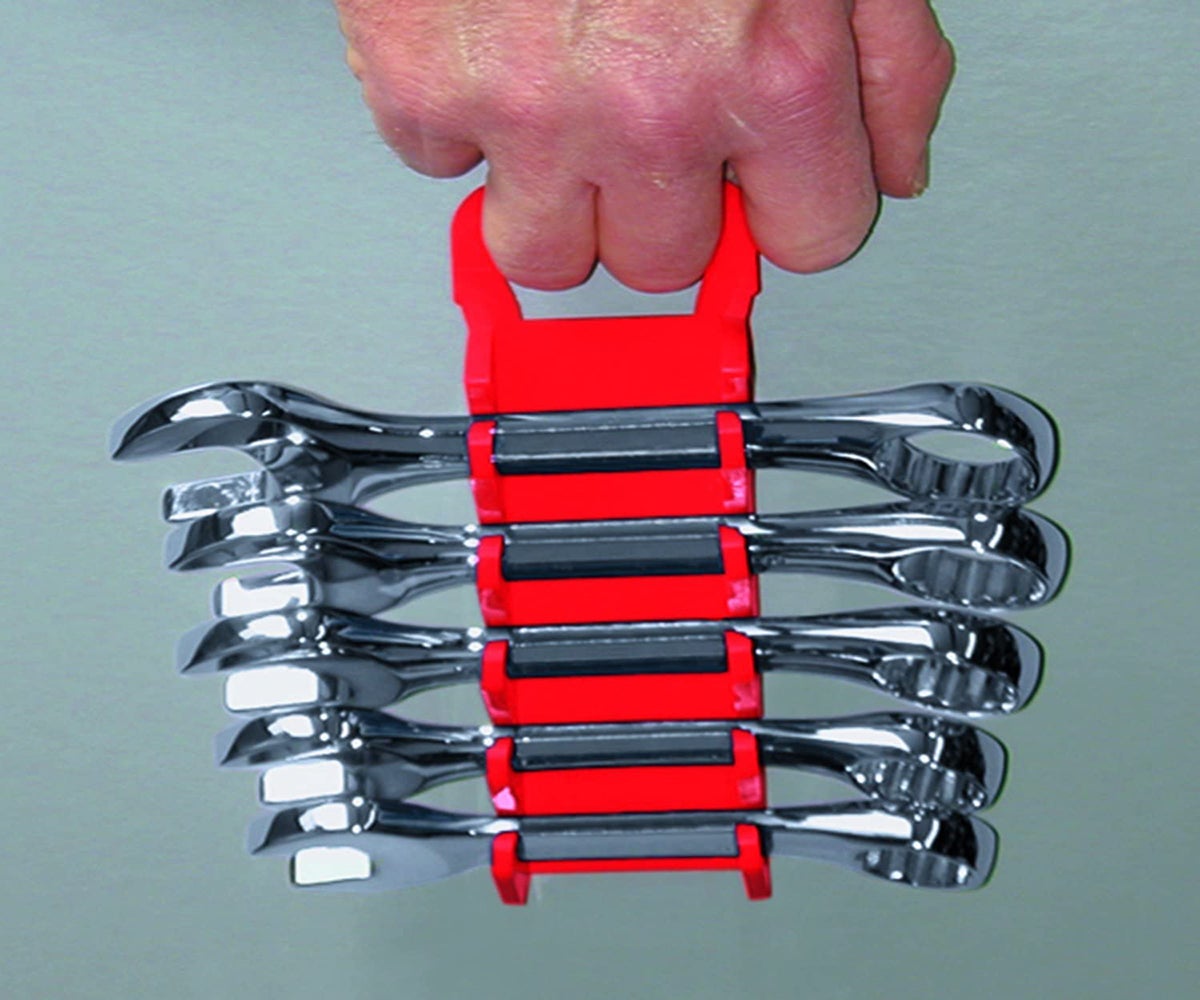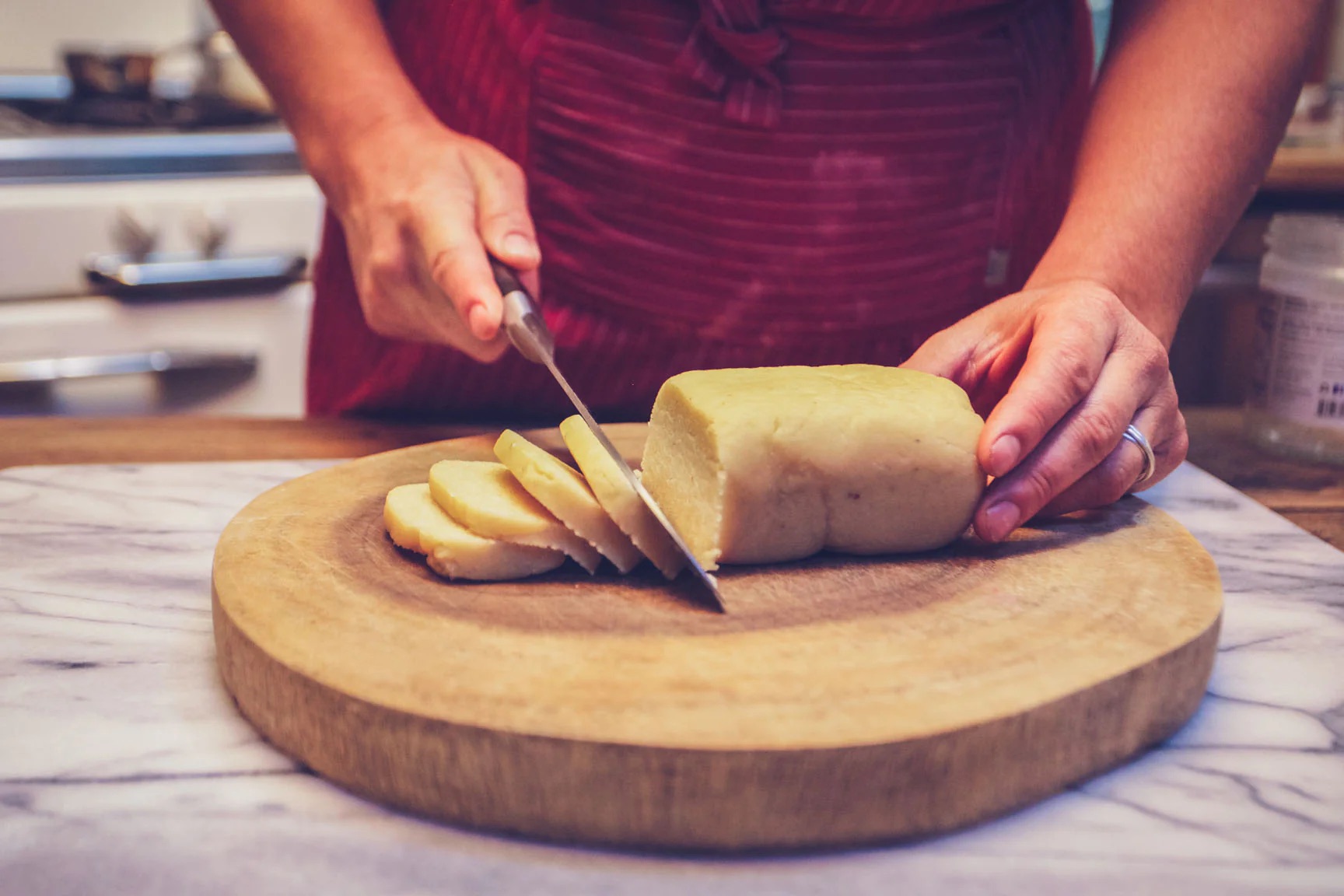

Articles
How To Store Bruschetta
Modified: March 2, 2024
Learn how to store bruschetta with these helpful articles. Keep your favorite appetizer fresh and delicious for longer.
(Many of the links in this article redirect to a specific reviewed product. Your purchase of these products through affiliate links helps to generate commission for Storables.com, at no extra cost. Learn more)
Introduction
Bruschetta is a delicious Italian appetizer that consists of crispy toasted bread topped with a flavorful mixture of fresh tomatoes, garlic, basil, and olive oil. It’s a crowd-pleasing dish that can be enjoyed as an appetizer, snack, or even a light meal. If you’ve ever made bruschetta before, you know that it’s best enjoyed fresh, right after it’s prepared. However, there are times when you may want to store bruschetta for later use.
In this article, we will guide you on how to effectively store bruschetta without compromising its taste and texture. We’ll explore different methods of storing bruschetta, including refrigerating and freezing, and provide you with some useful tips and tricks to ensure that your stored bruschetta remains as delicious as possible.
So, whether you want to make a large batch of bruschetta for a party or simply store some leftover bruschetta for another day, read on to discover the best techniques for storing this appetizing Italian treat!
Key Takeaways:
- Properly storing bruschetta is essential for maintaining its delicious flavors and textures. Refrigerating or freezing bruschetta, using high-quality ingredients, and following storage tips can help preserve this classic Italian appetizer.
- When storing bruschetta, choose ripe but firm tomatoes, minimize moisture contact with the bread, and label and date the stored bruschetta for easy reference. Experiment with different toppings and enjoy the vibrant flavors of bruschetta anytime!
Read more: How To Store Basil From Store
Understanding Bruschetta
Before we delve into the details of storing bruschetta, let’s take a moment to understand this classic Italian dish. Bruschetta originated in central Italy and is traditionally made with simple and fresh ingredients. The base of bruschetta is a crispy slice of bread that is grilled or toasted until golden brown.
One of the defining features of bruschetta is the topping, which typically consists of diced fresh tomatoes, garlic, basil, and a drizzle of extra virgin olive oil. However, there are countless variations of bruschetta that incorporate different ingredients such as mozzarella, prosciutto, roasted vegetables, or even seafood.
Bruschetta is known for its vibrant flavors and contrasting textures. The toasty bread provides a satisfying crunch, while the juicy tomatoes, aromatic garlic, and fragrant basil add a burst of freshness. The combination of these ingredients makes bruschetta a popular choice for appetizers, snacks, or even light meals. It’s a versatile dish that can be customized to suit personal preferences, making it a favorite among food enthusiasts.
Now that we have a better understanding of what bruschetta is, let’s explore how we can store it to enjoy its flavors and textures at a later time.
Choosing the Right Ingredients
When it comes to making bruschetta, using fresh and high-quality ingredients is essential. To ensure that your bruschetta retains its delicious flavors even after being stored, it’s important to choose the right ingredients.
1. Bread: Opt for a rustic Italian bread, such as a baguette or ciabatta, with a firm crust and soft interior. This type of bread holds up well when toasted and provides a sturdy base for the bruschetta toppings.
2. Tomatoes: Choose ripe and juicy tomatoes for the best bruschetta experience. Look for varieties such as Roma tomatoes or vine-ripened tomatoes, which have a good balance of sweetness and acidity. Avoid using overly ripe or mushy tomatoes, as they can make the bruschetta soggy.
3. Garlic: Fresh garlic is key to achieving the bold and aromatic flavor in bruschetta. Peel and mince the garlic cloves just before adding them to the topping mixture to ensure maximum flavor.
4. Basil: Opt for fresh basil leaves, as they add a fragrant and herbaceous note to the bruschetta. Tear the basil leaves into small pieces or chop them finely before incorporating them into the topping mixture.
5. Olive Oil: Extra virgin olive oil is the best choice for bruschetta, as it adds a rich and fruity flavor. Use a high-quality olive oil that is smooth and golden in color.
By selecting the right ingredients, you can enhance the taste and quality of your bruschetta, both when freshly prepared and when stored for later enjoyment.
Preparing Bruschetta
Now that we have covered the essentials of choosing the right ingredients, let’s move on to the steps involved in preparing bruschetta. Follow these simple instructions to create a delicious batch of bruschetta:
- Start by preheating your oven to 400°F (200°C) or turning on your grill to medium-high heat.
- Slice the bread into ½-inch thick slices. You can cut them into smaller bite-sized pieces or leave them as longer slices, depending on your preference.
- Place the bread slices on a baking sheet or directly on the grill grates. Brush each side lightly with olive oil to help achieve a crisp exterior.
- Toasting in the oven: Bake the bread slices for about 8-10 minutes, flipping them halfway through, until they are golden brown and crispy. Keep an eye on them to avoid burning.
- Toasting on the grill: Cook the bread slices for approximately 2-3 minutes per side until they develop grill marks and turn crispy.
- While the bread is toasting, prepare the bruschetta topping. Dice the tomatoes into small pieces and place them in a bowl.
- Add the minced garlic, chopped basil, a drizzle of olive oil, and a pinch of salt and pepper to the bowl with the tomatoes. Gently toss the ingredients together to combine.
- Once the bread slices are toasted, remove them from the oven or grill and let them cool slightly until they are safe to handle.
- Spoon the tomato mixture generously onto each bread slice, making sure to distribute the toppings evenly.
- Serve the bruschetta immediately for the freshest and most delicious experience. Alternatively, if you want to store the bruschetta, follow the next sections for proper storage methods.
By following these steps, you can create a batch of mouthwatering bruschetta that will delight your taste buds. With the preparation completed, it’s time to learn how to properly store bruschetta to maintain its flavors and textures for later enjoyment.
Storing Bruschetta
If you find yourself with leftover bruschetta or want to make a big batch in advance, it’s important to know how to properly store it to preserve its flavors and textures. There are two main methods for storing bruschetta: refrigerating and freezing. Let’s explore each method:
Read more: How To Store Store-Bought Bread
Method 1: Refrigerating Bruschetta
If you plan to consume the bruschetta within the next day or two, refrigerating is the best option. Follow these steps:
- Transfer the prepared bruschetta to an airtight container. Make sure the container is large enough to hold the bruschetta without crushing the toppings.
- Before sealing the container, place a piece of parchment paper or plastic wrap directly on top of the tomato mixture. This acts as a barrier and helps prevent moisture from seeping into the bread and making it soggy.
- Seal the container tightly and place it in the refrigerator.
- Refrigerated bruschetta is best consumed within 1-2 days for optimal taste and texture.
- When ready to enjoy, remove the bruschetta from the refrigerator and let it come to room temperature for about 10-15 minutes. This allows the flavors to meld together again before serving.
Method 2: Freezing Bruschetta
If you want to store bruschetta for a longer period, freezing is a great option. The process is slightly different from refrigeration:
- Place the prepared bruschetta on a baking sheet lined with parchment paper, spacing them slightly apart.
- Put the baking sheet in the freezer and let the bruschetta freeze for about 1-2 hours, or until firm.
- Once the bruschetta slices are frozen, transfer them to a freezer-safe container or zip-top bag. Make sure to remove as much air as possible from the bag before sealing it.
- Label the container or bag with the date of freezing for easy reference.
- Frozen bruschetta can be stored for up to 3 months without a significant loss in quality.
- When you’re ready to enjoy the frozen bruschetta, remove the desired number of slices from the freezer and let them thaw in the refrigerator overnight.
- After thawing, you can either enjoy the bruschetta cold or reheat it in the oven at a low temperature until warmed through.
By following these storage methods, you can extend the shelf life of your bruschetta and enjoy its deliciousness at a later time. However, keep in mind that the texture and freshness may be slightly compromised compared to freshly made bruschetta.
Method 1: Refrigerating Bruschetta
If you plan to consume the bruschetta within the next day or two, refrigerating is the best option for storing it. Refrigeration helps to slow down the spoilage process and maintain the flavors and textures of the bruschetta. Here’s how you can refrigerate bruschetta:
- Transfer the prepared bruschetta to an airtight container. Choose a container that is large enough to hold the bruschetta without crushing the toppings.
- Before sealing the container, place a piece of parchment paper or plastic wrap directly on top of the tomato mixture. This creates a barrier and helps prevent moisture from seeping into the bread and making it soggy.
- Seal the container tightly to prevent any air from getting in, as exposure to air can cause the bruschetta to spoil more quickly.
- Place the bruschetta container in the refrigerator, preferably on a shelf where it won’t be easily disturbed.
- Refrigerated bruschetta is best consumed within 1-2 days for optimal taste and texture. As time goes on, the bread may lose some of its crispness, and the flavors may slightly diminish.
- When you’re ready to enjoy the refrigerated bruschetta, remove it from the refrigerator and allow it to come to room temperature for about 10-15 minutes. This allows the flavors to meld together again before serving.
Refrigerating bruschetta is a convenient way to store it, especially when you plan to consume it relatively soon. However, keep in mind that the longer it stays in the refrigerator, the more the flavors may deteriorate and the texture may change.
Remember to always use proper food safety practices when storing and consuming any perishable food item. If you notice any signs of spoilage, such as an off smell or unusual texture, it’s best to discard the bruschetta to prevent any risk of foodborne illness.
Store bruschetta in an airtight container in the refrigerator for up to 2 days. If the bruschetta contains fresh tomatoes, it’s best to consume it within 24 hours for the best flavor and texture.
Method 2: Freezing Bruschetta
If you want to store bruschetta for a longer period, freezing it is an excellent option. Freezing helps to preserve the flavors and textures of the bruschetta, allowing you to enjoy it even after an extended period. Here’s how you can freeze bruschetta:
- Place the prepared bruschetta on a baking sheet lined with parchment paper. Make sure to space them slightly apart so they don’t stick together when frozen.
- Place the baking sheet with the bruschetta slices in the freezer. Allow them to freeze for about 1-2 hours, or until firm.
- Once the bruschetta slices are frozen, transfer them to a freezer-safe container or a zip-top bag. If using a bag, try to remove as much air as possible before sealing it to minimize the risk of freezer burn.
- Label the container or bag with the date of freezing for easy reference in the future.
- Frozen bruschetta can be stored in the freezer for up to 3 months without a significant loss in quality. Beyond that, the flavor and texture may start to deteriorate.
- When you’re ready to enjoy the frozen bruschetta, remove the desired number of slices from the freezer and place them in the refrigerator to thaw overnight.
- After thawing, you can either enjoy the bruschetta cold or reheat it in the oven at a low temperature until warmed through.
Freezing bruschetta is a great option when you have a surplus or want to prepare it ahead of time. The freezing process helps to preserve the flavors and extend the shelf life of the bruschetta. However, keep in mind that frozen and thawed bruschetta may not be as crispy as fresh bruschetta. The texture may become slightly softer due to the moisture content in the toppings.
Remember to store the frozen bruschetta in a proper freezer-safe container or bag to prevent freezer burn and maintain its quality. Always practice proper food safety guidelines and discard any bruschetta that shows signs of spoilage or deterioration.
Read more: How To Store Basil From Grocery Store
Tips for Storing Bruschetta
To ensure that your bruschetta stays fresh and delicious when stored, consider these helpful tips:
- Choose ripe but firm tomatoes when preparing the bruschetta topping. Overly ripe tomatoes can make the topping too watery, leading to a soggy bruschetta.
- Minimize the amount of moisture that comes into contact with the bread. Moisture can make the bread lose its crispness and become mushy. Use parchment paper or plastic wrap directly on the tomato mixture before sealing the container to create a barrier.
- If you plan to enjoy the bruschetta over multiple days, consider storing the bread slices separately from the tomato topping. This prevents the bread from getting soggy and allows you to assemble fresh bruschetta each time.
- When thawing frozen bruschetta, do it in the refrigerator rather than at room temperature. This helps to maintain the quality and prevents the growth of harmful bacteria.
- If you’re reheating frozen bruschetta in the oven, do it at a low temperature to avoid burning the bread. Start with a preheated oven at 300°F (150°C) and check on the bruschetta frequently until warmed through.
- If you have leftover bruschetta that has been refrigerated and has lost its crispness, try using it as a topping for salads or as a filling for sandwiches or wraps.
- Consider keeping the bread and topping separate until just before serving if you’re planning to take bruschetta to a picnic or potluck. This will help maintain the freshness and prevent the bread from becoming soggy during transport.
- Label and date your stored bruschetta to keep track of its freshness and ensure that you consume it within the recommended time frame.
- Always use clean utensils and hands when handling bruschetta to prevent cross-contamination and maintain food safety.
By following these tips, you can maximize the shelf life of your bruschetta and preserve its flavors and textures for later enjoyment. Experiment with different variations of bruschetta toppings to keep things interesting and discover new flavor combinations.
Remember, while storing bruschetta allows you to enjoy it beyond its initial preparation, nothing beats the taste and texture of freshly made bruschetta. So, relish every bite when it’s fresh and savor the flavors of this classic Italian appetizer!
Conclusion
Bruschetta is a delightful Italian appetizer that showcases the bright flavors of fresh tomatoes, garlic, basil, and olive oil. When it comes to storing bruschetta for later use, it’s important to follow the right techniques to maintain its deliciousness.
Refrigerating bruschetta is ideal if you plan on consuming it within a day or two. By transferring the prepared bruschetta to an airtight container and adding a protective layer of parchment paper or plastic wrap, you can prevent moisture from making the bread soggy and preserve its flavors for a short period.
On the other hand, freezing bruschetta is a great option when you want to store it for a longer time. Freezing helps to maintain the flavors and textures of the bruschetta, though the bread may become slightly softer upon thawing. Properly packaging the bruschetta in a freezer-safe container or bag, and labeling it with the date of freezing, ensures its quality during storage.
Regardless of the storage method you choose, it’s important to use fresh and high-quality ingredients to make delicious bruschetta. Select ripe and firm tomatoes, fragrant garlic, fresh basil, and a good-quality olive oil to elevate the flavors of your bruschetta whether it’s freshly made or stored.
Lastly, keep in mind a few additional tips, such as minimizing moisture contact with the bread, thawing frozen bruschetta in the refrigerator, and using leftover bruschetta creatively in other dishes to extend its use.
So, the next time you’re craving bruschetta or planning a gathering, feel confident in your ability to make and store this incredible Italian classic. With the proper techniques and ingredients, you can enjoy the vibrant flavors and textures of bruschetta anytime, whether freshly prepared or stored for a later indulgence!
Frequently Asked Questions about How To Store Bruschetta
Was this page helpful?
At Storables.com, we guarantee accurate and reliable information. Our content, validated by Expert Board Contributors, is crafted following stringent Editorial Policies. We're committed to providing you with well-researched, expert-backed insights for all your informational needs.














0 thoughts on “How To Store Bruschetta”